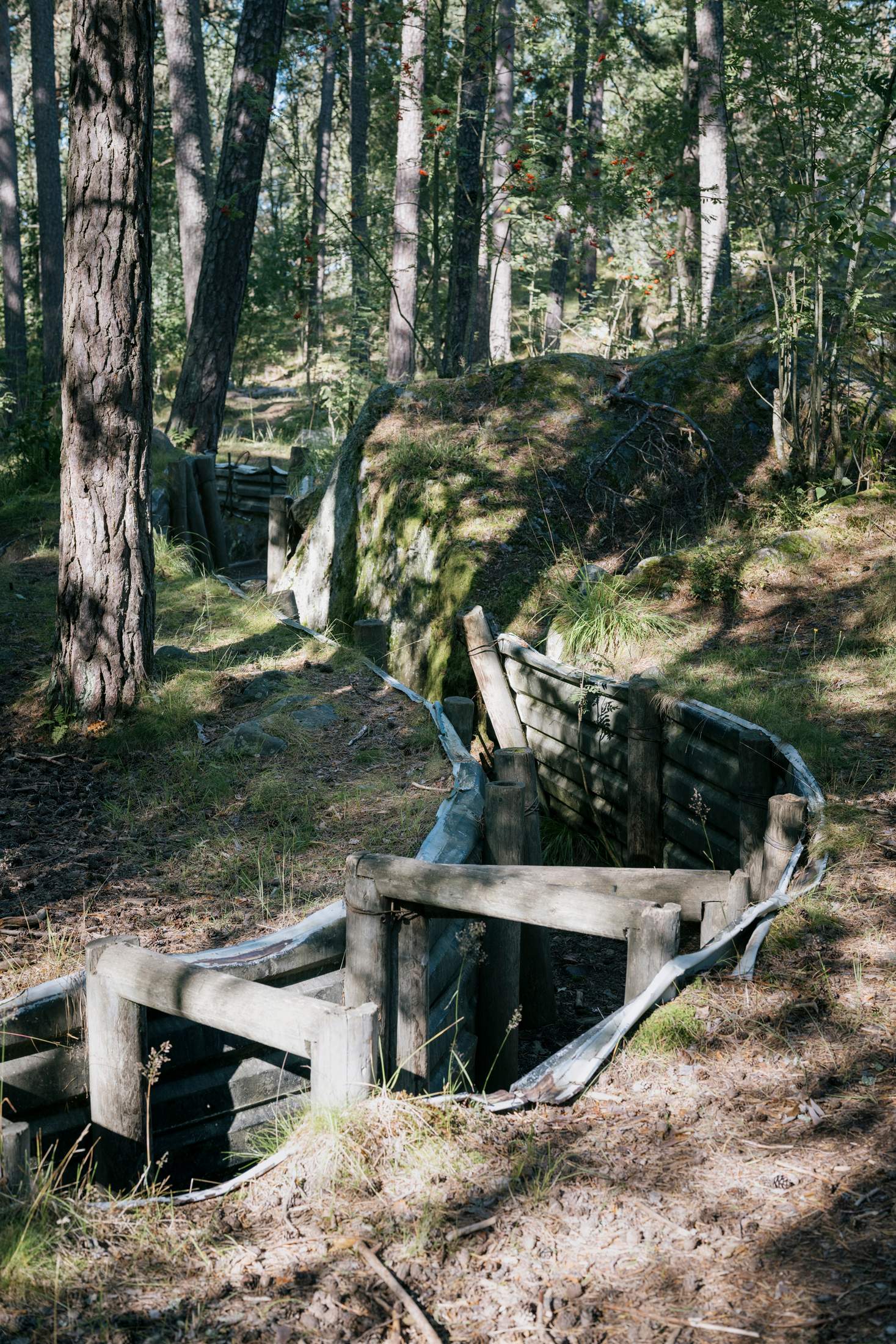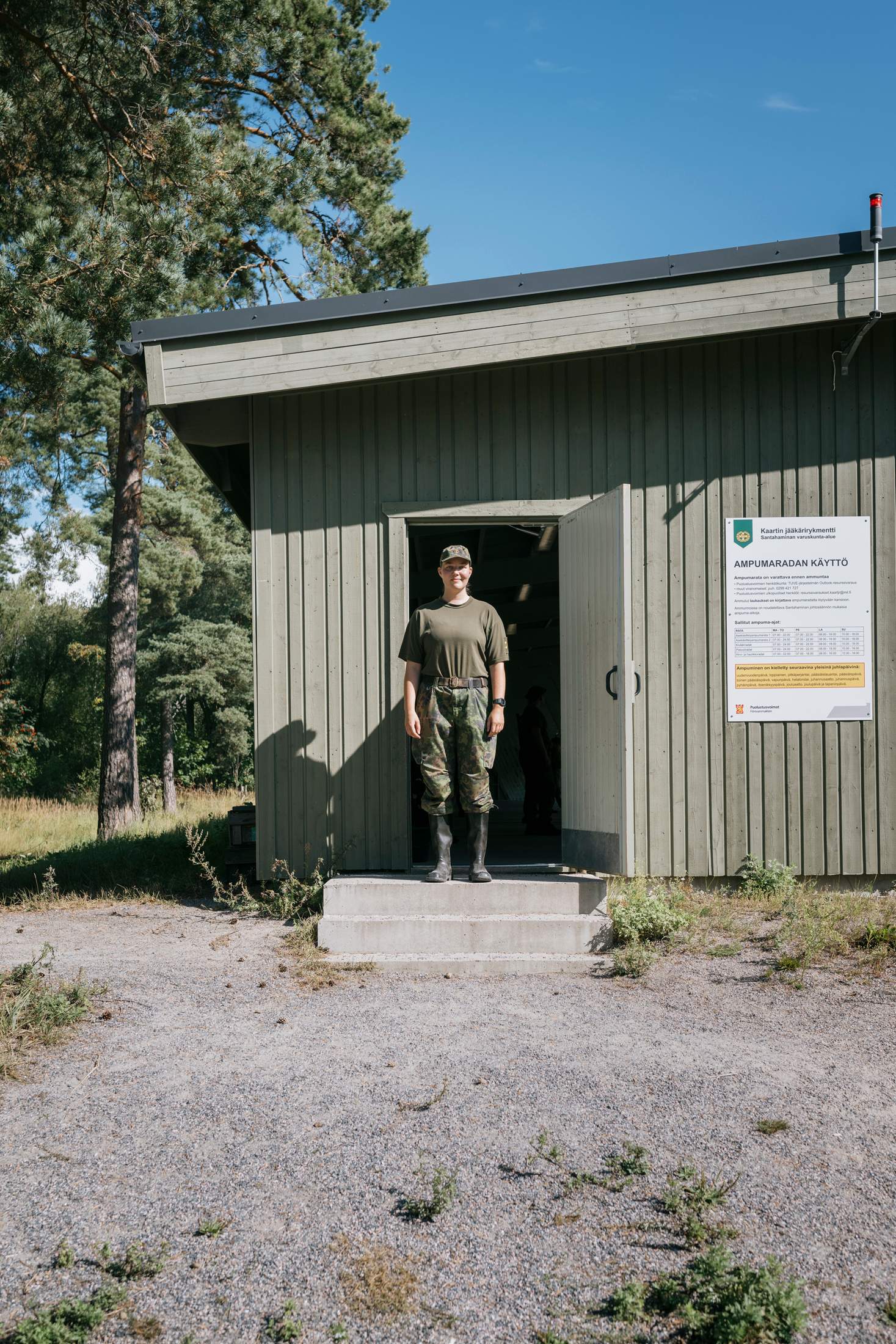Affairs: Defence / Finland
The Finns signing up for military training
Following Russia’s invasion of Ukraine, thousands of Finns are learning to fight, mindful of their country’s 1,300km border with its bellicose eastern neighbour. Monocle joins some of these volunteers on exercises near Helsinki where an independent defence organisation calls the shots.
Alisa Krol takes a deep breath, exhales and pulls the trigger of her 7.62 rk62 assault rifle. The 50-cent coin on the rifle’s barrel quivers but doesn’t fall. “Well done,” says her trainer Ida-Susanna Pöllänen. The two women, both in their early twenties, are crouched down on a shooting range on the island of Santahamina off the coast of Helsinki. Krol had never fired a gun before today but, in less than half an hour, she and 20 or so more in her group will all fire live rounds from these assault rifles. All are attendees on a three-day “basic military skills” course, one of more than 3,000 voluntary defence courses organised every year by the mpk (short for Maanpuolustuskoulutus, or “national defence training”). This publicly funded, independent, non-partisan organisation has taught military and safety skills to hundreds of thousands of Finns.

When Russia launched its invasion of Ukraine in 2022, applications to mpk courses grew tenfold. Most of them – many of which charge a €15 enrolment fee – now sell out in hours. On the day that monocle visits the Santahamina base, less than half an hour’s drive from downtown Helsinki, most participants cite the Ukraine war as the reason for taking part. Finland shares a 1,300km land border with Russia and the conflict has shaken the foundations of the Nordic country’s defence and security policy. After decades of neutrality, Finland has joined Nato and there has been a significant uptick in conflict preparedness.
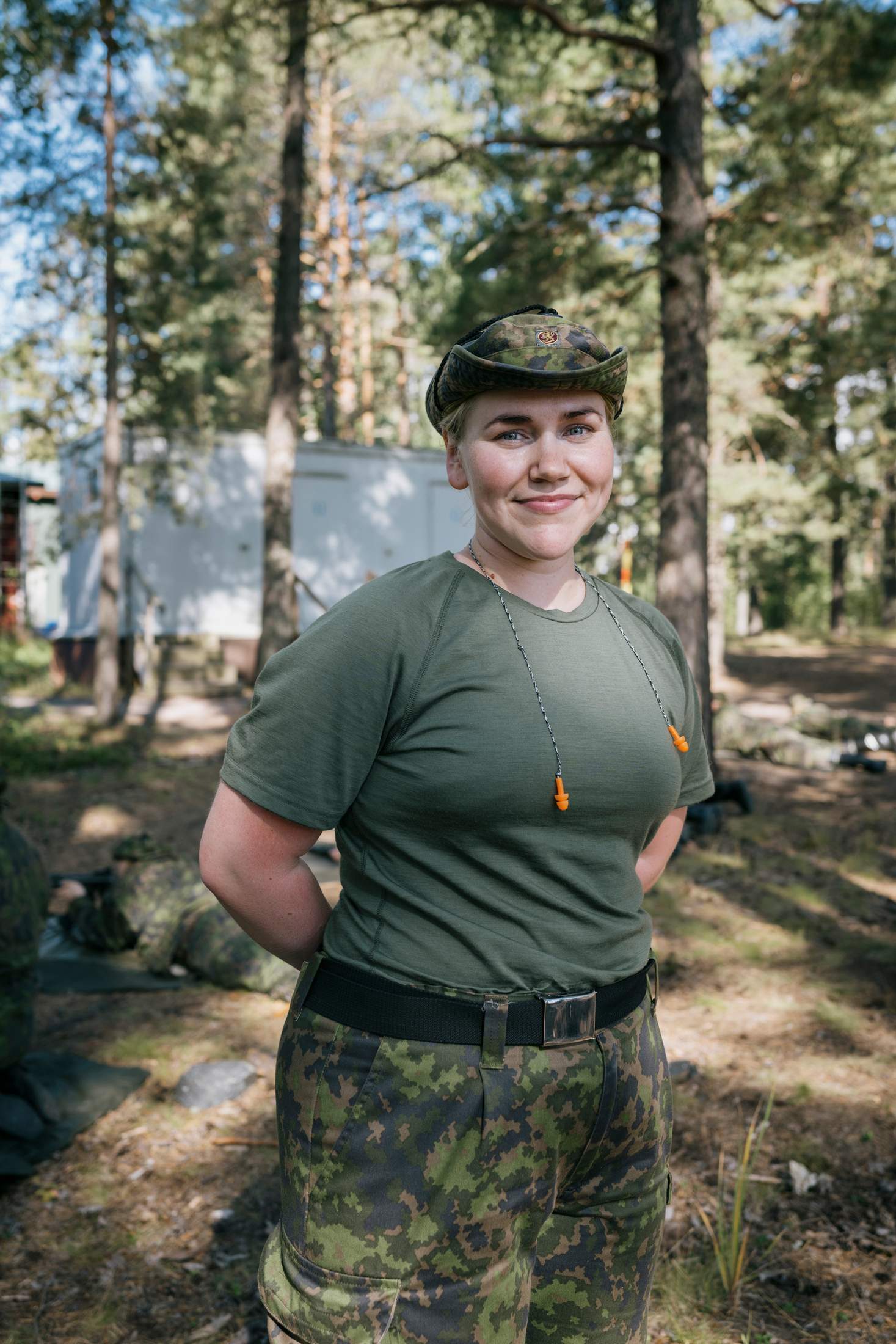

Krol’s group is split evenly between men and women. In a country where military service is mandatory for men but voluntary for women (about 1,500 of whom elected to take part this year), courses such as these are a great way to learn basic military skills in a short period of time. “I’m thinking about volunteering for the military service and this is a great way to see if I’m cut out for it,” says Krol. She’s not alone in this way of thinking. Tessie Fagerholm, a 22-year-old taking part on the same course, shares Krol’s sentiment. “Defending our country is everyone’s responsibility, not just the men,” she says as we accompany her and the other participants for a lunch of chicken soup and military-issue banana chips under the pine trees. “I work as a baker, so I’m accustomed to waking up early like they do in the army,” says Fagerholm.
The Puolustusvoimat (Finnish Defence Forces) views the mpk as a strategic and operative partner. Despite the latter’s notional independence, much of the training takes place on military grounds with military gear. Moreover, most of the courses that the mpk runs are designed in collaboration with the defence forces. The mpk’s mission statement, as defined by Finnish law, is to promote national defence while supporting and improving the country’s military preparedness. Remarkably, its courses train more than 70,000 participants a year on a budget of just €8m. And these numbers are set to grow.
“Without the 3,000 unpaid volunteers who run the organisation and its exercises, none of this would be possible,” Vesa Sundqvist, head of mpk’s Southern Finland District, tells monocle as we join a group of men in their thirties taking part in anti-tank training. Dressed in battle gear, the men advance in the hilly forest, each carrying an Apilas anti-tank weapon. It’s a sunny day, with temperatures hovering around 25c, and the recruits are drenched in sweat. “Enemy tank ahead, take your positions,” shouts the trainer as the men dive into trenches. The tank is imaginary. This exercise is about how to manoeuvre while holding a 9kg weapon. If it was real, a properly managed Apilas would be able to destroy a tank from up to half a kilometre away. One of the participants is 30-year-old Heikki Toijala, who works at an IT company. “Russia attacking Ukraine was a wake-up call for me,” he says. “I signed up for courses in order to learn as much as possible about defence.”
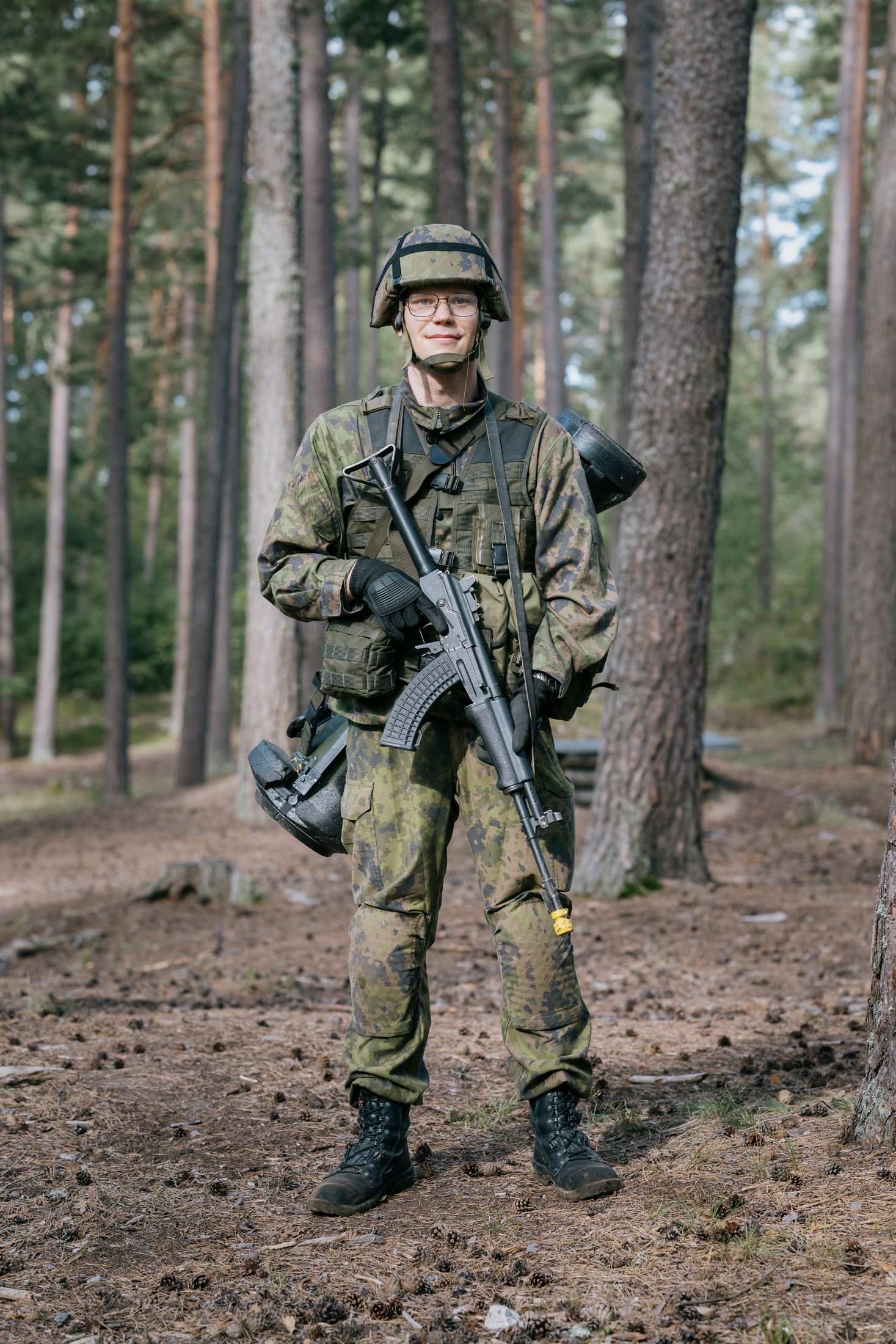
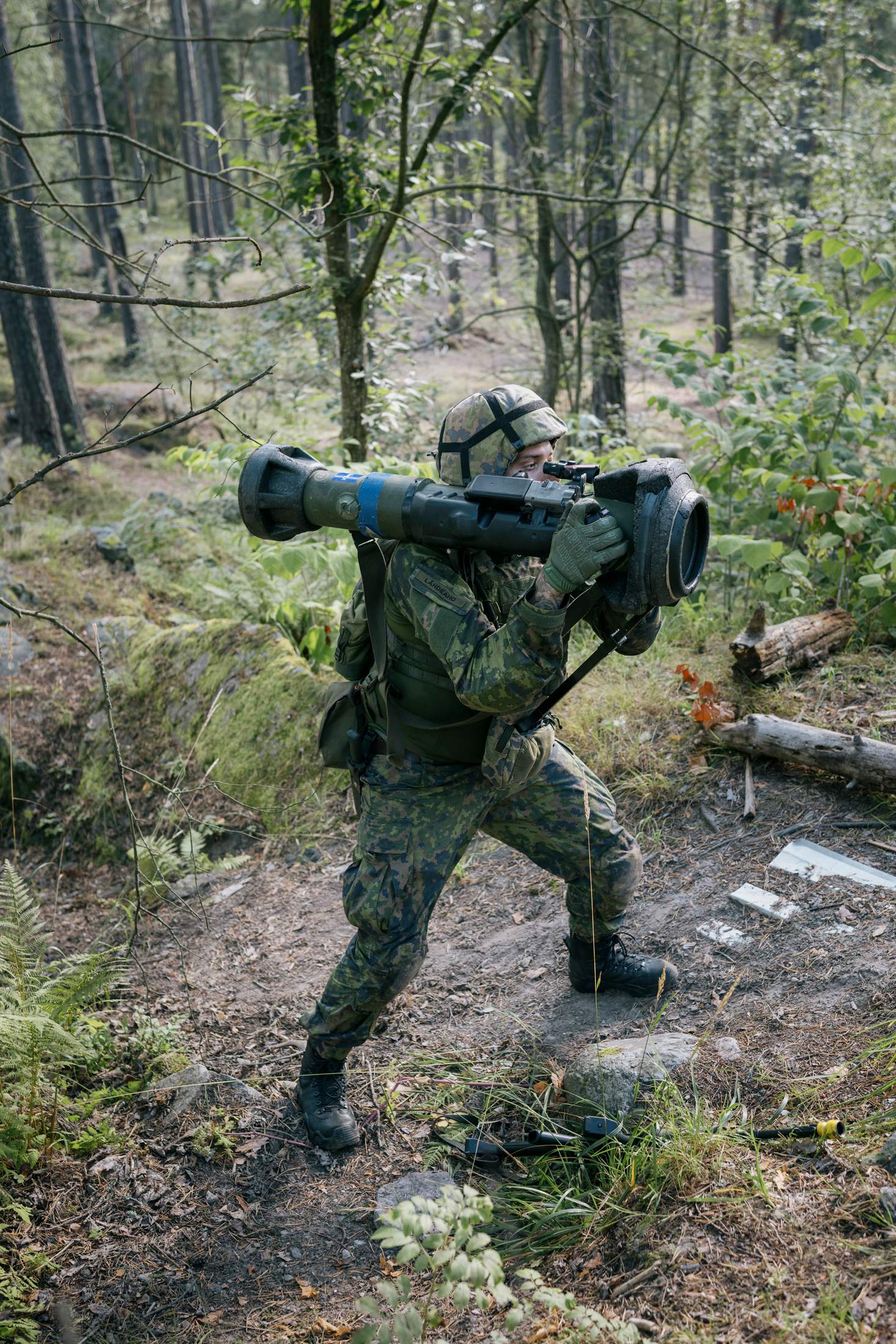
The two wars that Finland waged against the Soviet Union in the 1930s and 1940s, and the subsequent period dubbed Finlandisation – during which Moscow had a final say on the country’s foreign and security policy – are still fresh in Finns’ collective memory. When Russia attacked Ukraine, public opinion about staying out of Nato in order to avoid provoking its eastern neighbour shifted rapidly; Finland joined the alliance in 2023. Mandatory national service still enjoys widespread popularity in the country, with surveys indicating that 79 per cent of Finnish citizens would be willing to take up arms, among the highest numbers in Europe.
The fact that all men are enlisted means that the country’s armed forces boast an astonishing potential wartime strength of more than 900,000 trained soldiers, out of a population of 5.5 million. “Our military strength, and therefore our deterrent, relies on having well-trained and active reservists,” says Sundqvist. “So it is important that they have the chance to maintain and improve their skills in voluntary training.” To keep such a large reserve army in fighting shape, people from all walks of life need to practise their military skills, not just those who are young and fit. Sundqvist tells a story about an 80-year-old participant for whom the mpk needed to negotiate tailor-made insurance coverage so that he could continue taking part in the courses.
Women now constitute one-fifth of participants, a marked increase compared with just a few years ago. In a lakeside military training facility near Tuusula, an hour’s drive north of Helsinki, two dozen women of all ages are split into three groups to study portable generators. Ulla-Maija Niemi and Anne Takala run a five kilowatt Scheppach generator under the guidance of Jouko Savolainen, a volunteer trainer who is an electrician in his civilian life. “There is so much war and conflict in the news that I felt like I needed to prepare,” says Takala. This class is part of mpk’s comprehensive defence training, which makes up about a quarter of all of its courses. It’s a concept that underpins Finland’s defence doctrine and is built on the principle that the society in its entirety, not just the military, is responsible for safeguarding vital functions in times of conflict and emergency. In addition to teaching how back-up generators work, the mpk also hosts courses on cybersecurity that it organises with Finnish universities, as well as ones on first aid, navigation, radiation, search and rescue, and wilderness survival.
Much of the mpk’s funding comes from the state. When asked whether more money would help, Sundqvist replies that “it wouldn’t hurt”. He is being diplomatic. mpk volunteers are currently stretched to the limit and it is clear that additional funding is needed in order to keep up with the growing popularity of the courses. In 2022 the government of then prime minister Sanna Marin granted the organisation additional funding worth €3m, while Finland’s current centre-right government has increased state support further.
But the organisation needs more than just money. Weapons training is by far its most popular course; few things beat target practice with live rounds when learning combat skills. Following the invasion of Ukraine, the Finnish government passed a law in 2022 that allowed the mpk to train with weapons and ammunition from the defence forces and border guards. This August, following a €1.6m deal for tailor-made ar-15 and Nato-compatible practice rifles for voluntary defence training, Finnish weapons manufacturer Sako delivered a first consignment of arg s40s. The organisation won’t disclose how many rifles it ordered but says that the guns will give them the ability to organise more shooting training. “With this new rifle, we can practice shooting without the need to involve the defence forces,” says Sundqvist.
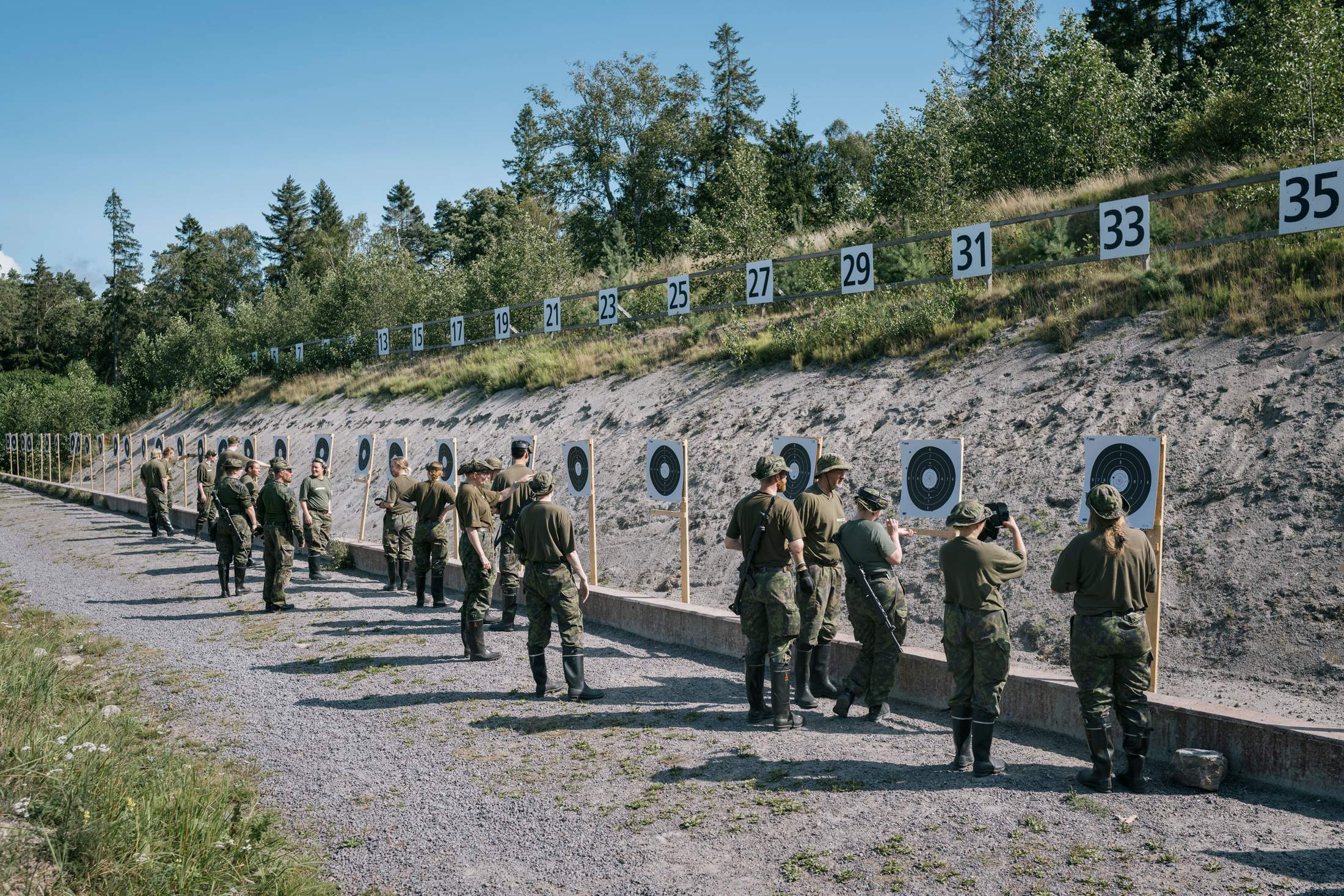
But the mpk also needs places to fire the rifles. The number of shooting ranges away from military bases has dropped from several thousand a few decades ago to just 670 today. In its policy programme, Finland’s current government, led by conservative prime minister Petteri Orpo, has pledged to up that number to 1,000 by cutting down on bureaucracy and environmental regulation, something that the mpk has welcomed.
The war in Ukraine has led many Western countries to increase defence spending and ramp up weapons production. Politicians in countries including the UK and Germany have suggested returning, at least partially, to mandatory military service, while Latvia, Lithuania and Sweden have reinstated conscription. Many cite Finland, which never scrapped national service, as a positive example.
Finnish voluntary defence training is getting a lot of attention too. Finland’s neighbours Estonia, Sweden and Norway have their own equivalents of the mpk, though they are part of the defence forces, while Taiwan has a longstanding tradition of civil defence training. Sundqvist says that he has recently hosted contingents from other European countries who have expressed interest in doing things the Finnish way. Poland has launched an initiative dubbed “Holidays with the Army” to attract recent graduates to learn military skills over a month in the summer. For their efforts, the participants were paid an equivalent of about €1,400. In contrast, Finns have to pay to take part in most mpk training. It is a testament to the country’s remarkable national unity and sense of duty that tens of thousands do this every year. In a world sliding towards conflict, there are few better deterrents.
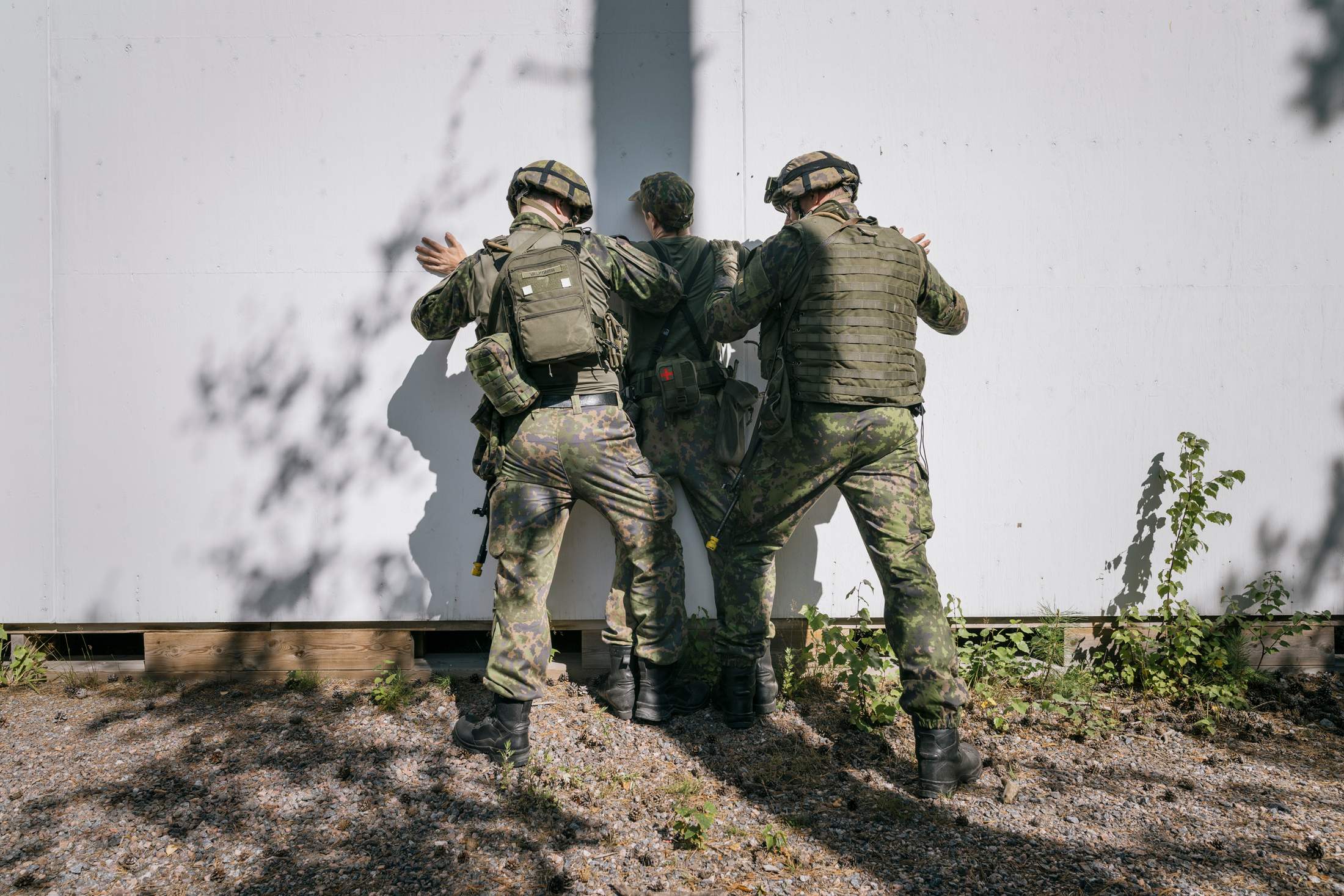
Finland’s armed forces in numbers
Active service personnel: 24,000
Reservists: 870,000
Artillery units: 1,700
Tanks: 650
Number of military aircraft: 164
Naval fleet: 246 vessels
